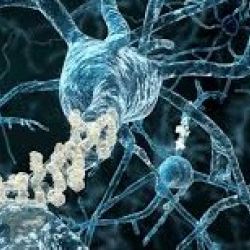
A recent Medpage Today featured an article entitled "Aisen: Negative Anti-Amyloid Trial Confirms Amyloid Hypothesis," which, according to Dr. Paul Aisen of USC, constitutes evidence that the beta-amyloid plaques that form in the brains of Alzheimer's patients are intimately involved with the disease itself. Once the predominant theory, the Amyloid Hypothesis has suffered because in one trial after another, mostly attempts to dissolve the plaques or prevent them from forming, have been abysmal failures.
Dr. Aisen cautions us: not so fast. He believes that we have simply been looking at the wrong drugs. I'm not so convinced.
Speaking at the Clinical Trials in Alzheimer's Disease (CTAD) meeting in San Diego, Aisen discussed phase III of the EXPEDITION3 trial, which was designed to study whether a monoclonal antibody called solanezumab (Eli Lilly) could slow cognitive dementia in patients who has already developed amyloid plaques. It did not.
Solanezumab is one of several antibodies that are being developed for this purpose. Although the drug showed a small effect: an 11 percent reduction in disease progression (1), this did not meet the endpoint that was expected by Lilly.
Different physicians had different takes on Aisen's conclusions.
Anton Porsteinsson, MD, of the University of Rochester School of Medicine: "I don't think they dispute it, and I don't think they necessarily affirm it either."
David Knopman, MD, of the Mayo Clinic in Rochester, Minn: [T[he study added 'a great deal more negative' to the debate over the hypothesis, but ... this was not a failure of amyloid beta but of this particular drug."
Eric Siemers, MD, of Eli Lilly: "Obviously we're very disappointed that we didn't reach our primary outcome...We didn't expect solanezumab to be the cure for this disease, but we hoped it would be the first to slow down the progression...It's been a rough time."
Although the drug did was it was "supposed to"—clearing soluble, forms of beta amyloid (the clearance can be measured in blood), no differences were seen between treated and control groups in PET or MRI scans, or the amount of tau protein (another Alzheimer's suspect) in cerebrospinal fluid. Despite many years and countless resources dedicated to Alzheimer's research, there is little cause for optimism here.
Note:
(1) Not only is this a small effect, but other measurements weren't so hot either. For example, another test called ADAS-Cog14—a different way of measuring Alzheimer's failed to show any significant improvement after 80 weeks of treatment.
